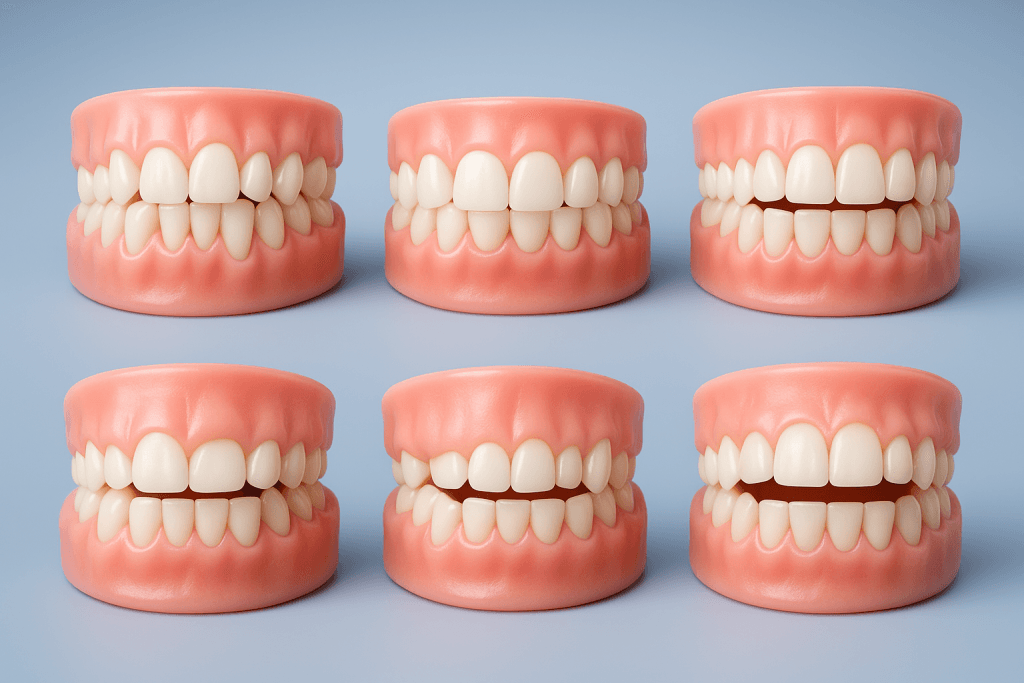Clear aligners have revolutionized orthodontic treatment, offering a discreet and comfortable alternative to traditional metal braces. These transparent, removable trays have become increasingly popular among both teens and adults seeking to improve their smiles without the aesthetic concerns of conventional orthodontics. But what exactly can clear aligners treat? Let’s explore the comprehensive range of dental issues that can be effectively addressed with this innovative technology.
Understanding Clear Aligner Technology
Clear aligners work through a series of custom-made, transparent plastic trays that gradually shift teeth into their desired positions. Each set of aligners is worn for approximately 1-2 weeks before progressing to the next set in the series. The treatment is planned using advanced 3D imaging technology that maps out the entire tooth movement process from start to finish.
Orthodontic Conditions Treatable with Clear Aligners
One of the most common issues treated with clear aligners is dental crowding. This occurs when there isn’t enough space in the jaw for all teeth to fit properly, causing them to overlap, twist, or push against each other. Clear aligners can effectively:
- Create space by gradually expanding the dental arch
- Rotate individual teeth to fit properly
- Align overlapping teeth into proper position
- Address mild to moderate crowding issues
Clear aligners excel at closing unwanted gaps between teeth, including:
- Diastema: The gap between front teeth
- Generalized spacing: Multiple small gaps throughout the smile
- Localized gaps: Spaces between specific teeth due to missing teeth or natural development
Modern clear aligner systems can address various bite irregularities:
- Overbite: When upper teeth extend too far over lower teeth, clear aligners can gradually reduce the overlap and improve bite function.
- Underbite: Mild cases where lower teeth protrude beyond upper teeth can be corrected by moving teeth into proper alignment.
- Crossbite: When upper teeth bite inside lower teeth on one or both sides of the mouth, aligners can correct this misalignment.
- Open Bite: Small gaps between upper and lower teeth when biting down can often be closed with clear aligner treatment.
Individual teeth that have rotated out of position or tilted incorrectly can be gradually moved into proper alignment. This includes:
- Twisted canines or incisors
- Teeth that have tilted due to missing adjacent teeth
- Minor rotations that affect smile aesthetics
Many adults who had braces as children experience minor relapse over time. Clear aligners are excellent for addressing:
- Teeth that have shifted slightly out of alignment
- Minor crowding that has developed
- Small gaps that have reopened
- General “touch-up” corrections
Advanced Cases and Limitations
What Clear Aligners Handle Well
- Mild to moderate orthodontic issues: Most alignment problems that don’t require major jaw repositioning — see how aligners compare to braces
- Aesthetic improvements: Enhancing smile appearance and tooth alignment — key benefits of clear aligners
- Functional corrections: Improving bite relationships and chewing efficiency
- Adult orthodontics: Particularly effective for mature patients with established bone structure
- Severe bite problems: Major jaw discrepancies may need surgical orthodontics
- Significant tooth rotations: Teeth rotated more than 45 degrees may be challenging
- Large gaps: Spaces larger than 6mm might require additional procedures
- Vertical tooth movement: Moving teeth up or down in the jaw bone can be limited
- Impacted teeth: Teeth that haven’t erupted properly typically need traditional methods
Age Considerations
- Crowded or crooked teeth during final development
- Spacing issues as adult teeth fully emerge
- Minor bite corrections during growth periods
- Aesthetic concerns during socially important years
- Professional appearance during treatment
- Comfort and convenience for busy lifestyles
- Correction of long-standing alignment issues
- Preparation for restorative dental work
The duration of clear aligner treatment varies based on the complexity of the case:
- Simple spacing or minor crowding: 3-6 months
- Moderate alignment issues: 6-12 months
- Complex cases: 12-24 months
- Comprehensive treatment: 18-30 months
Factors affecting treatment time include:
- Severity of the initial problem
- Patient compliance with wearing aligners 20-22 hours daily
- Individual biological response to tooth movement
- Need for additional procedures like attachments or interproximal reduction
Success Factors for Clear Aligner Treatment
Patient Compliance
The success of clear aligner treatment heavily depends on:
- Wearing aligners for the recommended 20-22 hours per day
- Changing to new aligners on schedule
- Maintaining proper oral hygiene
- Attending regular progress appointments
Treatment Planning
Effective clear aligner treatment requires:
Realistic Expectations
Patients should understand:
- Treatment limitations for their specific case
- The importance of retention after treatment (retainers guidance)
- Potential need for refinements or adjustments
- Long-term commitment to maintaining results
Maintaining Results
After completing clear aligner treatment, maintaining results requires:
- Retainers: Usually clear retainers similar to aligners
- Regular dental visits: Monitoring tooth position and oral health
- Good oral hygiene: Preventing gum disease that can cause relapse
- Lifestyle considerations: Avoiding habits that can shift teeth
Conclusion
Clear aligners represent a significant advancement in orthodontic treatment, capable of addressing a wide range of dental alignment issues. From simple spacing problems to complex bite corrections, these invisible braces offer an effective, comfortable, and aesthetically pleasing solution for many patients.
The key to successful treatment lies in proper case selection, thorough treatment planning, and excellent patient compliance. While not every orthodontic problem can be solved with clear aligners, the majority of common alignment issues can be effectively treated with this technology.
If you’re considering orthodontic treatment, consult with a qualified orthodontist or dentist experienced in clear aligner therapy. They can evaluate your specific case, discuss treatment options, and help you determine whether clear aligners are the right choice for achieving your ideal smile.
Remember, every smile is unique, and what works for one person may not be the best solution for another. Professional evaluation and personalized treatment planning are essential for achieving optimal results with any orthodontic treatment, including clear aligners.
